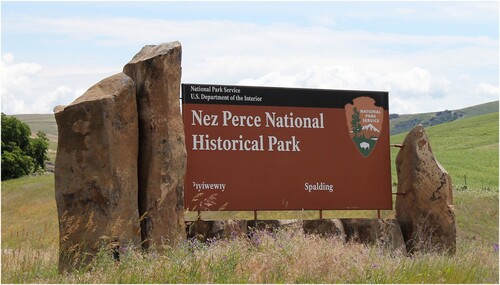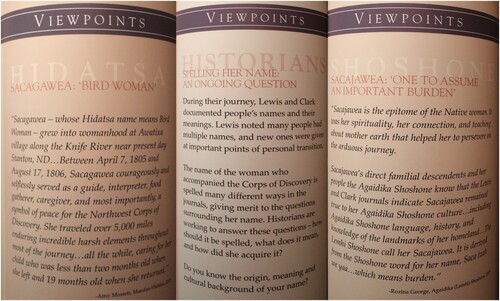Figures & data
Table 1. Quantitative results of interpretive content analysis.
Table 2. Interpretive content analysis sub-theme examples.
Figure 1. Indigenous site name – Nez Perce National Historical Park. Note the Indigenous site name aligned with the Spalding site name. Photograph by Leah Rosenkranz.

Figure 2. Multiple perspectives interpretation – “Viewpoints,” Sacajawea Historical State Park. Note the three different perspectives provided from the views of the Hidatsa, historians, and the Shoshone. Photograph by Leah Rosenkranz.

Figure 3. Visitor reflections – Fort Spokane, Lake Roosevelt National Recreation Area. Note the feelings expressed in the comments, demonstrating visitors’ perspectives on the site after being exposed to the difficult history of the site and boarding school. Photograph by Leah Rosenkranz.

Table 3. Lessons Learned and Recommendations for Increasing Indigenous Representation, Voice, and Authority in Heritage Site Interpretive Materials.
